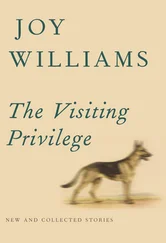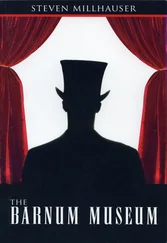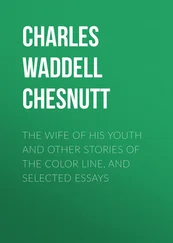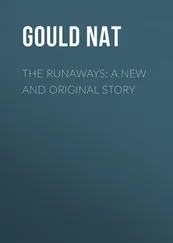Exhausted by these prodigies, I sought to pierce the outward shapes and seize the unquiet essence of the snow, but I saw only whiteness there. That night I spent in anxious dreams, and I woke feverish and unrefreshed to a sunny morning.
The world was still white, but snow was dripping everywhere. Icicles, longer and more lovely, shone forth in a last, desperate brilliance, rainspouts trickled, rills of bright black snow-water rushed along the sides of streets and poured through the sewer grates. I did not notice them at first, the harbingers of the new order. It was Mario who pointed the first one out to me. From the corner of a roof it thrust out over the rainspout. I did not understand it, but I was filled with happiness. I began to see others. They projected from roof corners, high above the yards, their smiles twisted in mockery. These gargoyles of snow had perhaps been shaped as a whim, a joke, a piece of childish exuberance, but as they spread through the town I began to sense their true meaning. They were nothing less than a protest against the solemnity, the rigidity, of our snowmen. What had seemed a blossoming forth of hidden powers, that second afternoon, suddenly seemed a form of intricate constriction. It was as if those bird-filled maples, those lions, those leaping ballerinas and prancing clowns, had been nothing but a failure of imagination.
On that third and last day, when our snowmen, weary with consummation, swerved restlessly away, I sensed a fever in the wintry air, as if everyone knew that such strains and ecstasies were bound to end quickly. Scarcely had the gargoyles sprouted from the roofs when, among the trees and tigers, one began to see trolls and ogres and elves. They squatted in the branches of real elms and snow elms, they peeked out through the crossed slats of porch aprons, they hid behind the skirts of snow women. Fantastical snowbirds appeared, nobly lifting their white, impossible wings. Griffins, unicorns, and sea serpents enjoyed a brief reign before being surpassed by splendid new creatures that disturbed us like half-forgotten dreams. Here and there rose fanciful dwellings, like unearthly castles, like fairy palaces glimpsed at the bottoms of lakes on vanished summer afternoons, with soaring pinnacles, twisting passageways, stairways leading nowhere, snow chambers seen in fever dreams.
Yet even these visions of the morning partook of the very world they longed to supplant, and it was not until the afternoon that our snowmen began to achieve freedoms so dangerous that they threatened to burn out the eyes of beholders. It was then that distorted, elongated, disturbingly supple figures began to replace our punctilious imitations. And yet I sensed that they were not distortions, those ungraspable figures, but direct expressions of shadowy inner realms. To behold them was to be filled with a sharp, troubled joy. As the afternoon advanced, and the too-soon-darkening sky warned us of transitory pleasures, I felt a last, intense straining. My nerves trembled, my ears rang with white music. A new mystery was visible everywhere. It was as if snow were throwing off the accident of accumulated heaviness and returning to its original airiness. Indeed these spiritual forms, disdaining the earth, seemed scarcely to be composed of white substance, as if they were striving to escape from the limits of snow itself. Walking the ringing streets in the last light, my nerves stretched taut, I felt in that last rapture of snow a lofty and criminal striving, and all my senses seemed to dissolve in the dark pleasures of transgression.
Drained by these difficult joys, I was not unhappy when the rain came.
It rained all that night, and far into the morning. In the afternoon the sun came out. Bright green grass shone among thin patches of snow. Joey Czukowski, Mario Salvio, Jimmy Shaw, and I roamed the neighborhood before returning to my cellar for a game of ping-pong. Brilliant black puddles shone in the sunny streets. Here and there on snow-patched lawns we saw remains of snowmen, but so melted and disfigured that they were only great lumps of snow. We did not discuss the events of the last few days, which already seemed as fantastic as vanished icicles, as unseizable as fading dreams. “Look at that!” cried Mario, and pointed up. On a telephone wire black as licorice, stretched against the bright blue sky, a bluejay sat and squawked. Suddenly it flew away. A dark yellow willow burned in the sun. On a wooden porch step I saw a brilliant red bowl. “Let’s do something,” said Joey, and we tramped back to my house, our boots scraping against the asphalt, our boot buckles jangling.
1
The Barnum Museum is located in the heart of our city, two blocks north of the financial district. The Romanesque and Gothic entranceways, the paired sphinxes and griffins, the gilded onion domes, the corbeled turrets and mansarded towers, the octagonal cupolas, the crestings and crenellations, all these compose an elusive design that seems calculated to lead the eye restlessly from point to point without permitting it to take in the whole. In fact the structure is so difficult to grasp that we cannot tell whether the Barnum Museum is a single complex building with numerous wings, annexes, additions, and extensions, or whether it is many buildings artfully connected by roofed walkways, stone bridges, flowering arbors, booth-lined arcades, colonnaded passageways.
2
The Barnum Museum contains a bewildering and incalculable number of rooms, each with at least two and often twelve or even fourteen doorways. Through every doorway can be seen further rooms and doorways. The rooms are of all sizes, from the small chambers housing single exhibits to the immense halls rising to the height of five floors. The rooms are never simple, but contain alcoves, niches, roped-off divisions, and screened corners; many of the larger halls hold colorful tents and pavilions. Even if, theoretically, we could walk through all the rooms of the Barnum Museum in a single day, from the pyramidal roof of the highest tower to the darkest cave of the third subterranean level, in practice it is impossible, for we inevitably come to a closed door, or a blue velvet rope stretching across a stairway, or a sawhorse in an open doorway before which sits a guard in a dark green uniform. This repeated experience of refused admittance, within the generally open expanses of the museum, only increases our sense of unexplored regions. Can it be a deliberately calculated effect on the part of the museum directors? It remains true that new rooms are continually being added, old ones relentlessly eliminated or rebuilt. Sometimes the walls between old rooms are knocked down, sometimes large halls are divided into smaller chambers, sometimes a new extension is built into one of the gardens or courtyards; and so constant is the work of renovation and rearrangement that we perpetually hear, beneath the hum of voices, the shouts of children, the shuffle of footsteps, and the cries of the peanut vendors, the faint undersound of hammers, pickaxes, and crumbling plaster. It is said that if you enter the Barnum Museum by a particular doorway at noon and manage to find your way back by three, the doorway through which you entered will no longer lead to the street, but to a new room, whose doors give glimpses of further rooms and doorways.
3
The Hall of Mermaids is nearly dark, lit only by lanterns at the tops of posts. Most of the hall is taken up by an irregular black lake or pool, which measures some hundred yards across at its widest point and is entirely surrounded by boulders that rise from the water. In the center of the pool stands a shadowy rock-island with many peaks and hollows. The water and its surrounding boulders are themselves surrounded by a low wooden platform to which we ascend by three steps. Along the inner rim of the platform stand many iron posts about six feet apart, joined by velvet ropes; at the top of every third post glows a red or yellow lantern. Standing on the platform, we can see over the lower boulders into the black water with its red and yellow reflections. From time to time we hear a light splash and, if we are lucky, catch a sudden glimpse of glimmering dark fishscales or yellow hair. Between the velvet ropes and the boulders lies a narrow strip of platform where two guards ceaselessly patrol; despite their vigilance, now and then a hand, glowing red in the lantern light, extends across the ropes and throws into the water a peanut, a piece of popcorn, a dime. There are said to be three mermaids in the pool. In the dark hall, in the uncertain light, you can see the faces at the ropes, peering down intently.
Читать дальше












